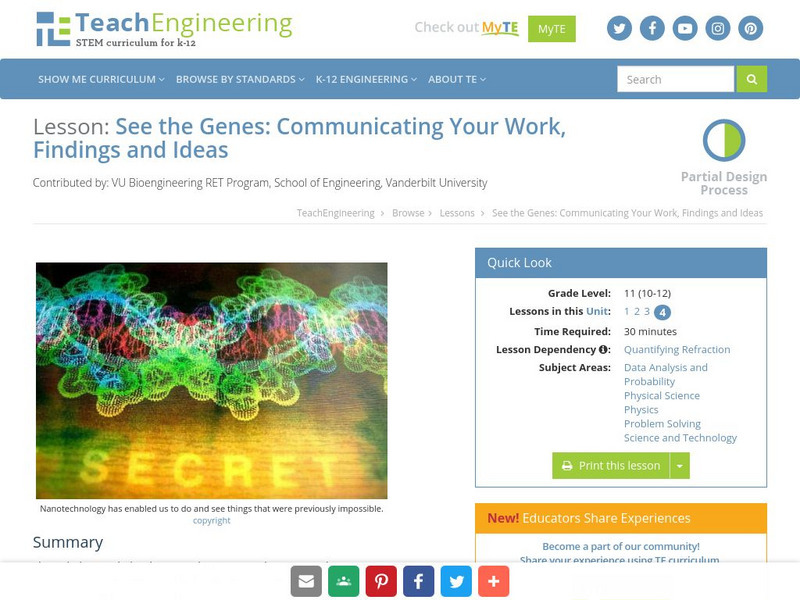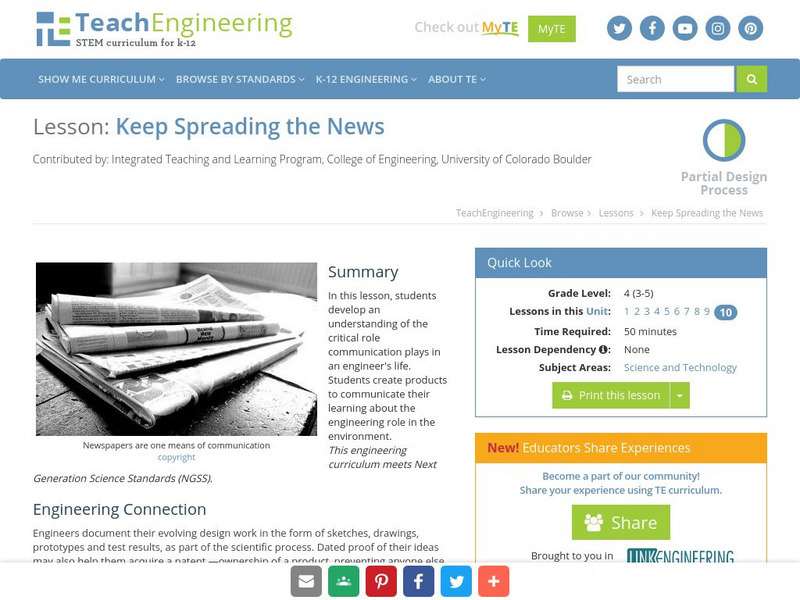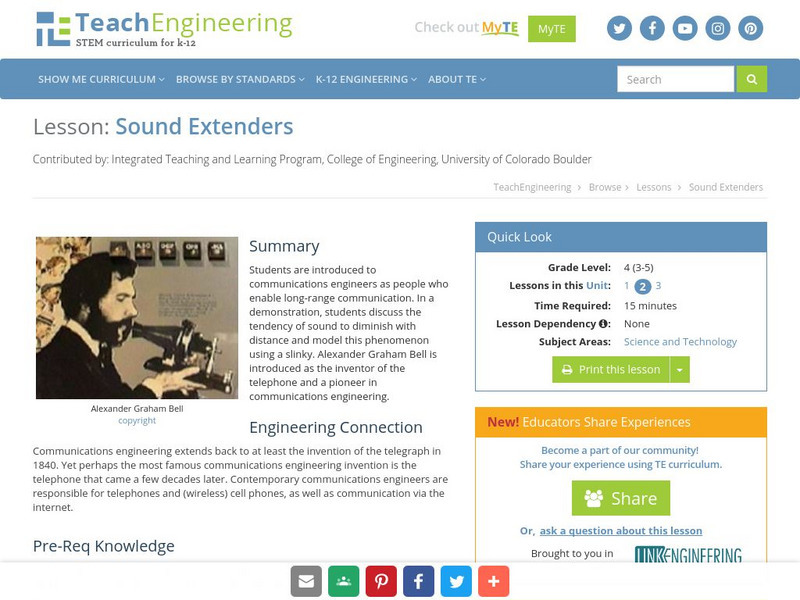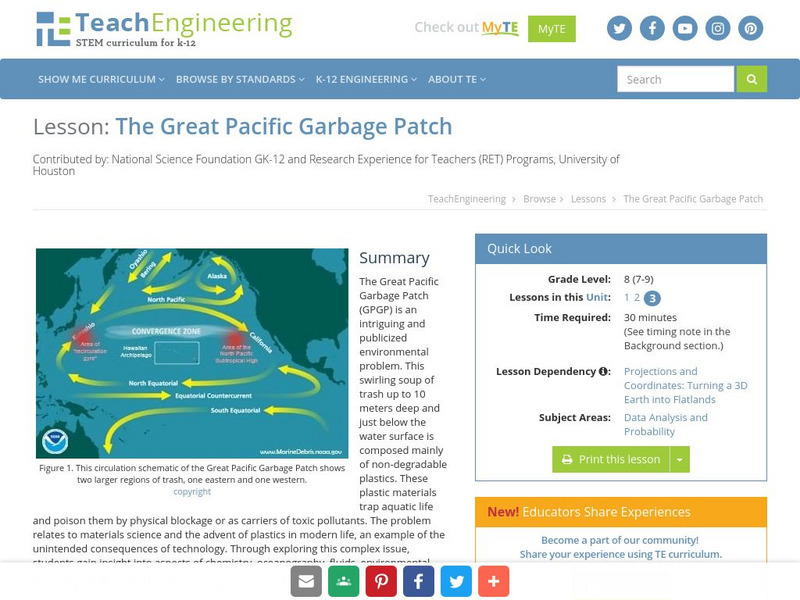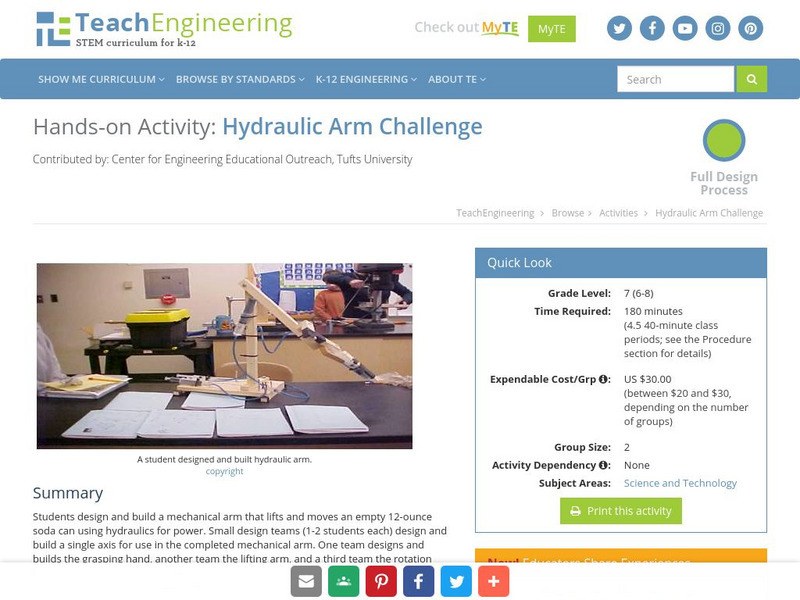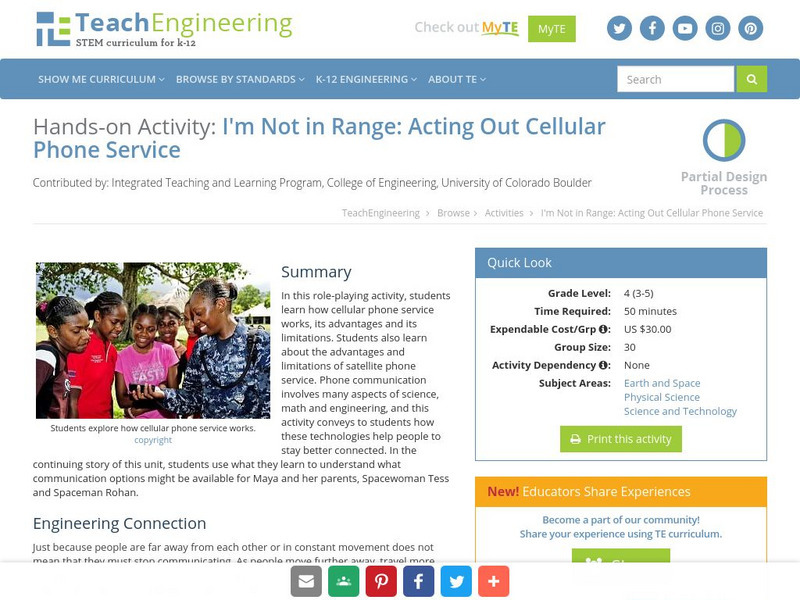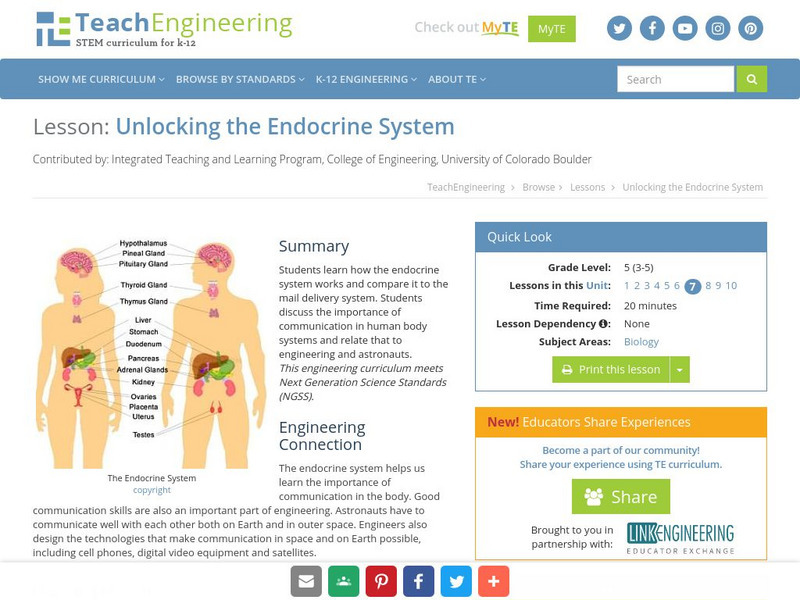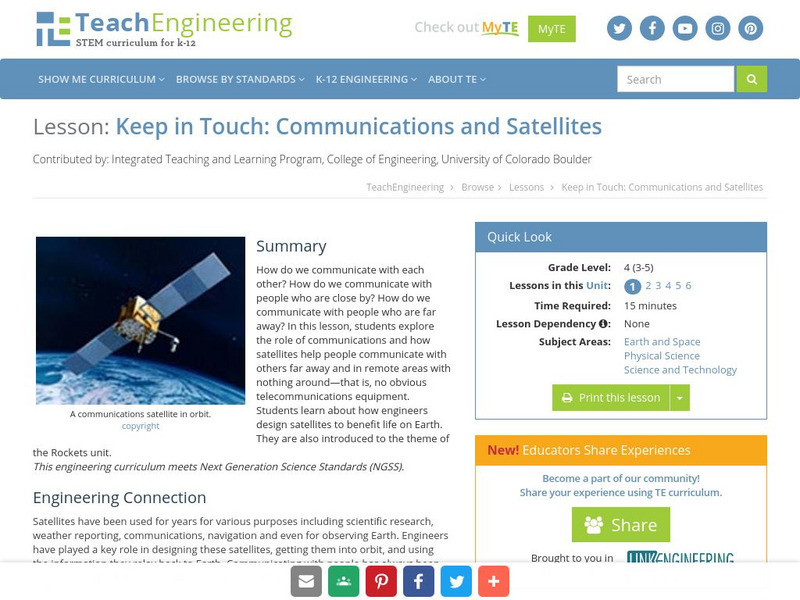TeachEngineering
Teach Engineering: See the Genes
Through this concluding instructional activity and its associated activity, students experience one valuable and often overlooked skill of successful scientists and engineers- communicating work and ideas. Students create posters...
TeachEngineering
Teach Engineering: Hello, Are You Listening?
Students gain a basic understanding of the engineering components behind telecommunications, in particular, the way telephone communication works to link one phone to another for conventional landline and cellular telephones. During this...
TeachEngineering
Teach Engineering: The Universal Language of Engineering Drawings
Students practice the ability to produce clear, complete, accurate and detailed design drawings through an engineering design challenge. Using only the specified materials, teams are challenged to draw a design for a wind-powered car....
TeachEngineering
Teach Engineering: For Those Back Home
Students review information learned during the past five lessons and activities of the Introduction to Engineering unit. Working in teams, they create flyers and short quizzes about various types of engineering to share with the class...
TeachEngineering
Teach Engineering: Smart Move!
This is a simple activity to visualize a communication system. In order to do this the students encode, decode, transmit, receive, and store messages. They will use a code sheet and flashlight for this process. They will also maintain a...
TeachEngineering
Teach Engineering: You're the Expert
Student teams learn about and devise technical presentations on four reproductive technology topics pregnancy ultrasound, amniocentesis, in-vitro fertilization or labor anesthetics. Each team acts as a panel of engineers asked to make a...
TeachEngineering
Teach Engineering: Drawing Designs in Detail
Students practice creating rudimentary detail drawings. They learn how engineers communicate the technical information about their designs using the basic components of detail drawings. They practice creating their own drawings of a...
TeachEngineering
Teach Engineering: Understanding Communication With a Robot
Student pairs first act out the instructions a robot is given with one person providing instructions and the other person following the instructions. This activity helps students understand how a robot is programmed and with what type of...
TeachEngineering
Teach Engineering: Keep Spreading the News
In this lesson, students develop an understanding of the critical role communication plays in an engineer's life. Students create products to communicate their learning about the engineering role in the environment.
Other
National Engineers Week Foundation: Hearing the Light
Students learn how laser communication systems are built by observing how sound can be encoded into, and transmitted by a light beam.
TeachEngineering
Teach Engineering: Write On!
In this activity, students create a book, newspaper or other published work to communicate what they have learned about engineering and the environment.
TeachEngineering
Teach Engineering: Sound Extenders
In this lesson, young scholars are introduced to communications engineers as people who enable long-range communication. In the lesson demonstration, students discuss the tendency of sound to diminish with distance and model this...
National Science Teachers Association
Nsta: Science & Engineering Practices: Obtaining, Evaluating, Communication
This site from NSTA includes a progression of the Science and Engineering Practice for obtaining, evaluating, and communicating information. In addition, thereare performance expectations that make use science and engineering practices.
TeachEngineering
Teach Engineering: Sound
Students learn the connections between the science of sound waves and engineering design for sound environments. Through three lessons, students come to better understand sound waves, including how they change with distance, travel...
TeachEngineering
Teach Engineering: Pingus Penguins: Writing Good Instructions
Students use the free computer game Pingus to learn how engineers, specifically environmental engineers, use their technical writing skills to give instructions and follow the instructions of others. Students learn to write instructions...
TeachEngineering
Teach Engineering: The Great Pacific Garbage Patch
The Great Pacific Garbage Patch (GPGP) is an interesting and somewhat publicized environmental problem. A swirling soup of trash up to 10 meters deep and just below the water surface is composed mainly of non-degradable plastics. These...
TeachEngineering
Teach Engineering: Hydraulic Arm Challenge
Students will design and build a mechanical arm that lifts and moves an empty 12-ounce soda can using hydraulics for power. Small design teams (1-2 students) will design and build a single axis for use in the completed mechanical arm....
TeachEngineering
Teach Engineering: Eye Witness Reporting
In this activity, the students will develop a briefing for a T.V. evening news program that summarizes their experiences surviving in the Amazon rainforest. The students will have the opportunity to role play as interviewer and...
TeachEngineering
Teach Engineering: Green Marketing
Students learn basic marketing concepts and use professional marketing techniques to compose an advertisement for a hybrid vehicle. In the process, they learn the principles of comparative analysis.
TryEngineering
Try Engineering: Electric Messages: Then and Now
Lesson investigates electronic communication from the Morse Code system to text messaging. To learn about this, students construct simple circuits, send messages to each other, and explore the history and impact of communication.
Other
Stc: The Society for Technical Communication
This site is dedicated to The Society for Technical Communication. Its membership includes writers, editors, illustrators, printers, publishers, educators, students, engineers, and scientists. You'll find resource materials, databases,...
TeachEngineering
Teach Engineering: I'm Not in Range
In this role-playing activity, students learn how cellular phone service works, its advantages and its limitations. Students also learn about the advantages and limitations of satellite phone service. Phone communication involves many...
TeachEngineering
Teach Engineering: Unlocking the Endocrine System
Students learn how the endocrine system works and compare it to the mail delivery system. Students discuss the importance of communication in human body systems and relate that to engineering and astronauts.
TeachEngineering
Teach Engineering: Keep in Touch: Communications and Satellites
How do we communicate with each other? How do we communicate with people who are close by? How do we communicate with people who are far away? In this lesson, students will explore the role of communications and how satellites help...


